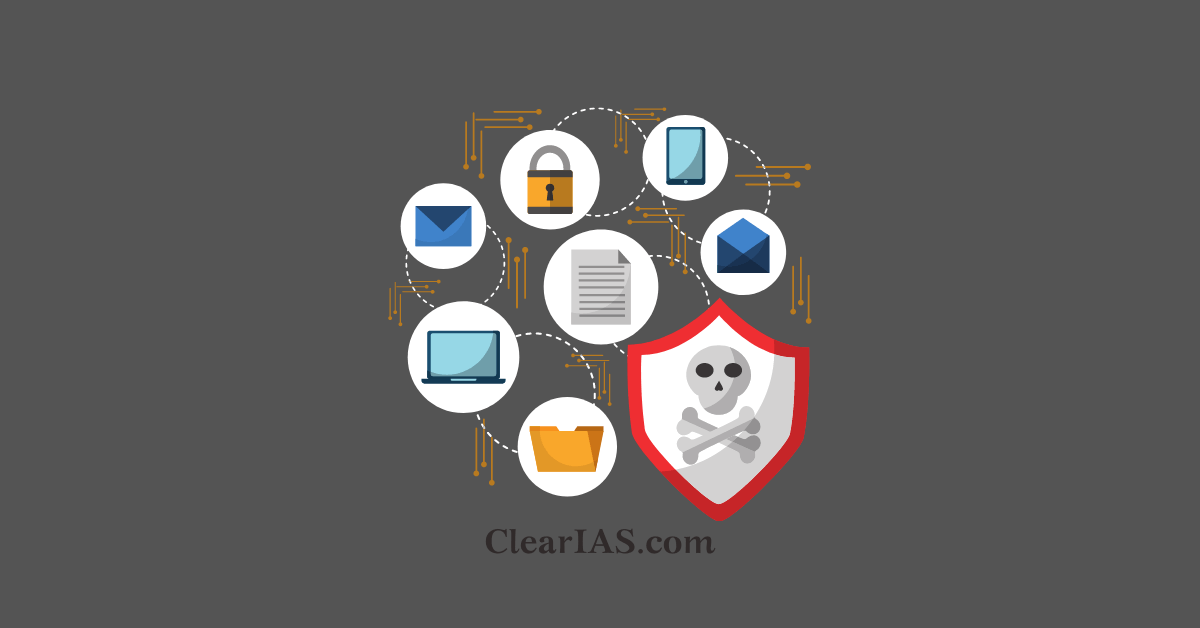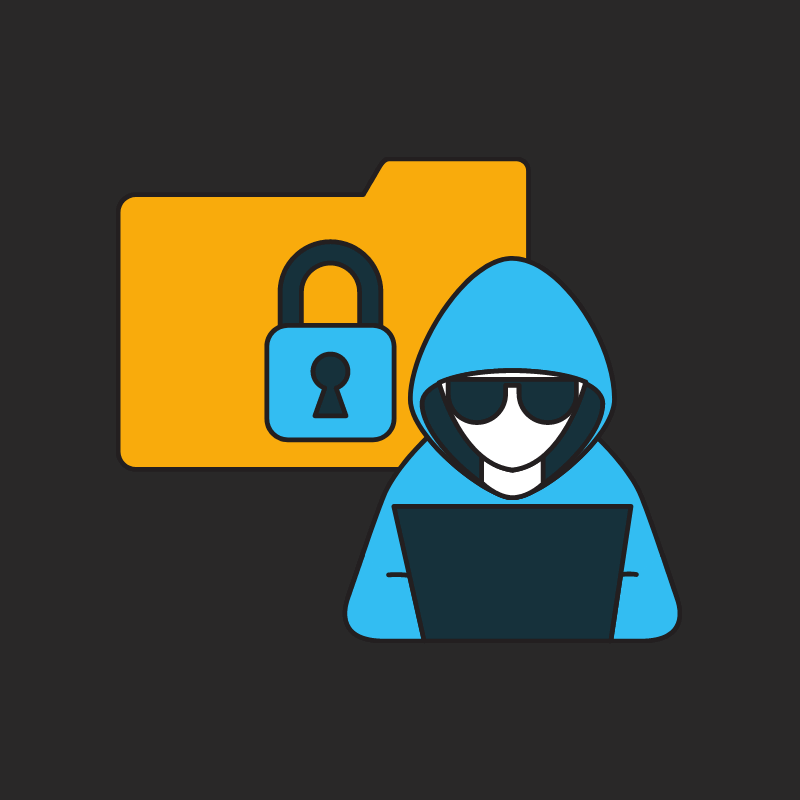

What is cybercrime? What are the types of cyber crimes? How to file a cybercrime complaint? How to use cybercrime.gov.in? Read to know more.
Computers, mobile phones, and the internet have changed modern life. They provide us with many benefits.
However, information technology also makes us vulnerable to a wide range of threats. These threats may result in financial loss or damage to our reputation.
A minor lapse in managing our digital lives can open the door to cybercriminals. So it is extremely important to know how to prevent us from cybercrimes.
Table of Contents
Subscribe to the ClearIAS YouTube Channel for more informative videos on UPSC preparation, tips, and strategies. Stay updated with our latest content and enhance your exam readiness.
Cybercrime is a crime involving computers and networks.
👉 Which year are YOU targeting for success in the IAS/IPS/IFS Exam? 🚀
The computer may have been used in the execution of a crime or it may be the target.
Cybercrime may be defined as “Any unlawful act where computer or communication device or computer network is used to commit or facilitate the commission of a crime”.
Most cybercrime falls under two main categories:
Cybercrime that targets computers often involves malware like viruses.
Cybercrime that uses computers to commit other crimes may involve using computers to spread malware, illegal information or illegal images.

Cybercrimes include monetary crimes as well as non-monetary offences. The crimes result in damage to persons, computers, or governments.
Child sexually abusive material (CSAM) refers to a material containing sexual images in any form, of a child who is abused or sexually exploited. Section 67 (B) of the IT Act states that “it is punishable for publishing or transmitting of material depicting children in the sexually explicit act, etc. in electronic form.
A form of harassment or bullying inflicted through the use of electronic or communication devices such as computers, mobile phones, laptops, etc.
Cyberstalking is the use of electronic communication by a person to follow a person, or attempts to contact a person to foster personal interaction repeatedly despite a clear indication of disinterest by such person; or monitors the internet, email or any other form of electronic communication commits the offence of stalking.
Cyber Grooming is when a person builds an online relationship with a young person and tricks or pressures him/ her into doing a sexual act.
Online Job Fraud is an attempt to defraud people who are in need of employment by giving them false hope/ promise of better employment with higher wages.
Online Sextortion occurs when someone threatens to distribute private and sensitive material using an electronic medium if he/ she doesn’t provide images of a sexual nature, sexual favours, or money.
Phishing is a type of fraud that involves stealing personal information such as Customer ID, IPIN, Credit/Debit Card number, Card expiry date, CVV number, etc. through emails that appear to be from a legitimate source.
Vishing is an attempt where fraudsters try to seek personal information like Customer ID, Net Banking password, ATM PIN, OTP, Card expiry date, CVV etc. through a phone call.
Smishing is a type of fraud that uses mobile phone text messages to lure victims into calling back on a fraudulent phone number, visiting fraudulent websites or downloading malicious content via phone or web.
Sexting is an act of sending sexually explicit digital images, videos, text messages, or emails, usually by cell phone.
SIM Swap Scam occurs when fraudsters manage to get a new SIM card issued against a registered mobile number fraudulently through the mobile service provider. With the help of this new SIM card, they get One Time Password (OTP) and alerts, required for making financial transactions through the victim’s bank account. Getting a new SIM card against a registered mobile number fraudulently is known as SIM Swap.
Credit card (or debit card) fraud involves the unauthorized use of another’s credit or debit card information for the purpose of purchases or withdrawing funds from it.
Impersonation and identity theft is an act of fraudulently or dishonestly making use of the electronic signature, password or any other unique identification feature of any other person.
Spamming occurs when someone receives an unsolicited commercial message sent via email, SMS, MMS and any other similar electronic messaging media. They may try to persuade the recipient to buy a product or service, or visit a website where he can make purchases, or they may attempt to trick him/ her into divulging bank account or credit card details.
Ransomware is a type of computer malware that encrypts the files, storage media on communication devices like desktops, Laptops, Mobile phones etc., holding data/information as a hostage. The victim is asked to pay the demanded ransom to get his device decrypts
A computer virus is a program written to enter your computer and damage/alter your files/data and replicate itself.
Worms are malicious programs that make copies of themselves again and again on the local drive, network shares, etc.
A Trojan horse is not a virus. It is a destructive program that looks like a genuine application. Unlike viruses, Trojan horses do not replicate themselves but they can be just as destructive. Trojans open a backdoor entry to your computer which gives malicious users/programs access to your system, allowing confidential and personal information to be theft.
A data breach is an incident in which information is accessed without authorization.
A denial of Services (DoS) attack is an attack intended for denying access to computer resources without the permission of the owner or any other person who is in charge of a computer, computer system or computer network.
A Distributed Denial of Service (DDoS) attack is an attempt to make an online service unavailable by overwhelming it with traffic from multiple sources.
Website Defacement is an attack intended to change the visual appearance of a website and/ or make it dysfunctional. The attacker may post indecent, hostile and obscene images, messages, videos, etc.
Cyber-Squatting is an act of registering, trafficking in or using a domain name with an intent to profit from the goodwill of a trademark belonging to someone else.
Pharming is a cyber-attack aiming to redirect a website’s traffic to another, bogus website.
Cryptojacking is the unauthorized use of computing resources to mine cryptocurrencies.
Online Drug Trafficking is a crime of selling, transporting, or illegally importing unlawful controlled substances, such as heroin, cocaine, marijuana, or other illegal drugs using electronic means.
Espionage is the act or practice of obtaining data and information without the permission and knowledge of the owner.
A cybercrime complaint can be filed using the National Crime Reporting Portal of India.
Website link is – https://cybercrime.gov.in/
This portal is an initiative of the Government of India to facilitate victims/ complainants to report cybercrime complaints online.
This portal caters for all types of cybercrime complaints including complaints pertaining to
The portal also provides an option of reporting an anonymous complaint about reporting online Child Pornography (CP) or sexually explicit content such as Rape/Gang Rape (RGR) content.
The Cyber Crime Helpline Number is 155260.
The Indian Computer Emergency Response Team (CERT-IN or ICERT) is an office within the Ministry of Electronics and Information Technology of the Government of India.
CERT-In is the national nodal agency for responding to computer security incidents as and when they occur. CERT-In is operational since January 2004.
CERT-In has been designated to serve as the national agency to perform the following functions in the area of cyber security:
CERT-IN has overlapping responsibilities with other agencies such as National Critical Information Infrastructure Protection Centre (NCIIPC).
Information Technology Act 2000 (IT Act 2000) is the main law connected with cyber security in India.
Indian Penal Code, 1860 is also used to book criminals connected with cybercrimes.
Read: